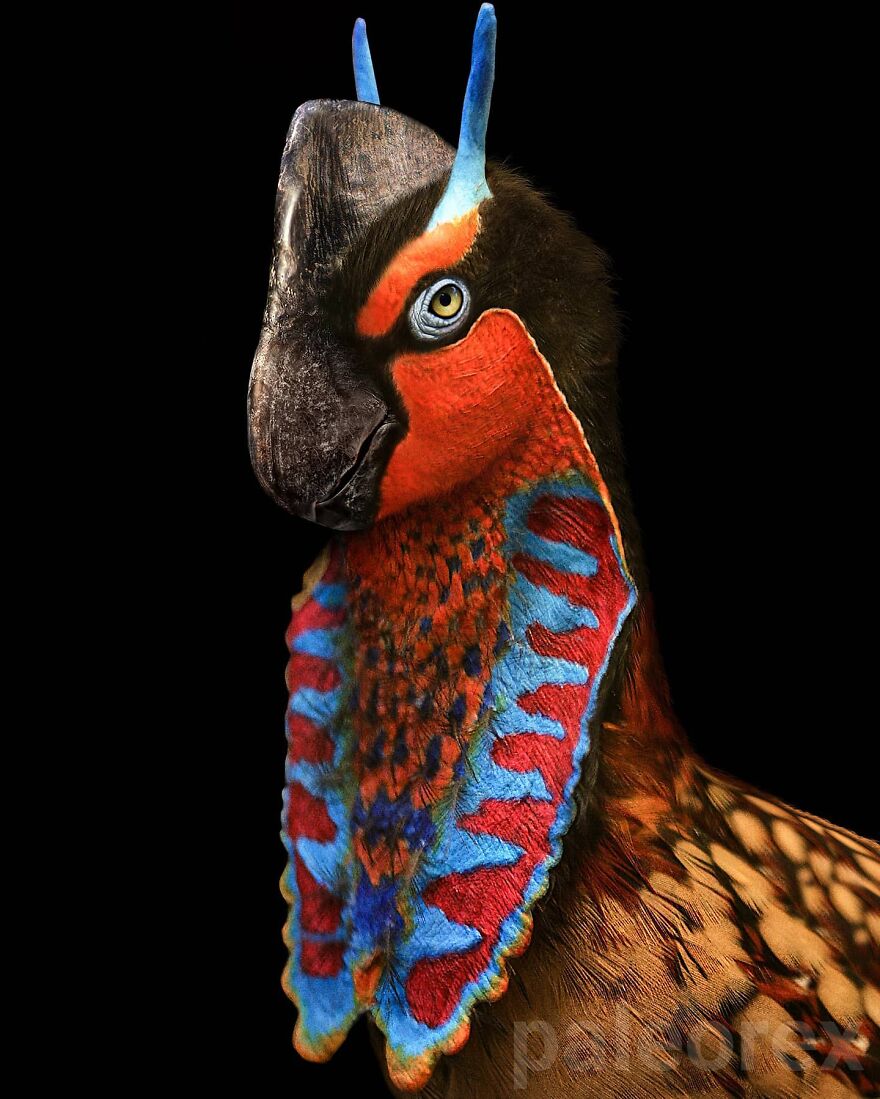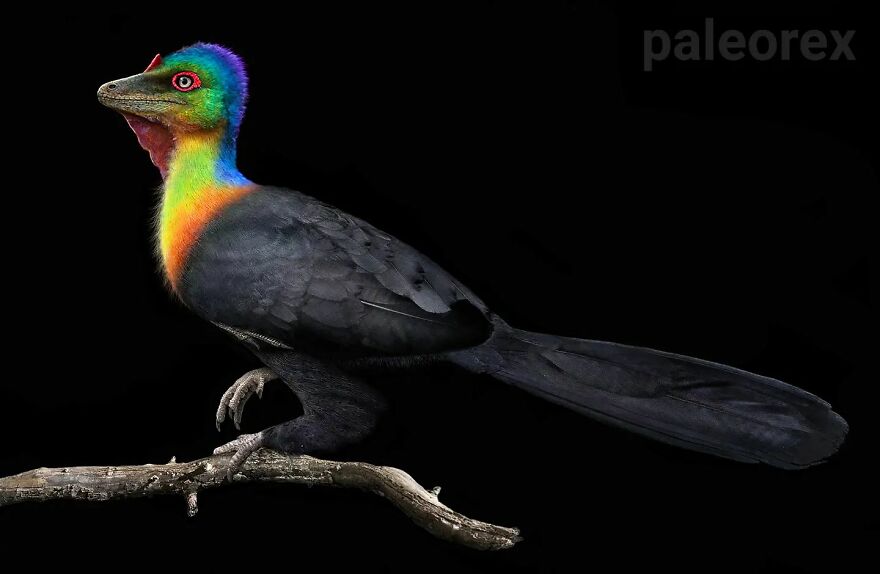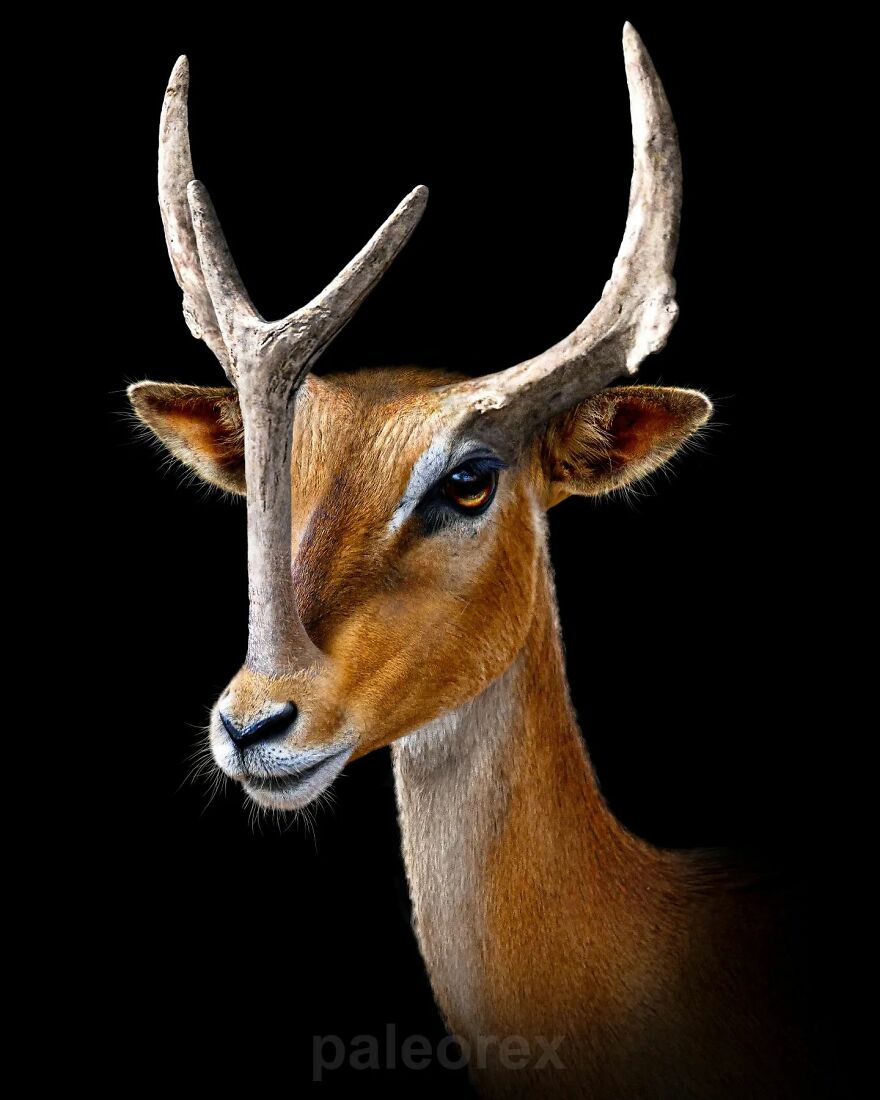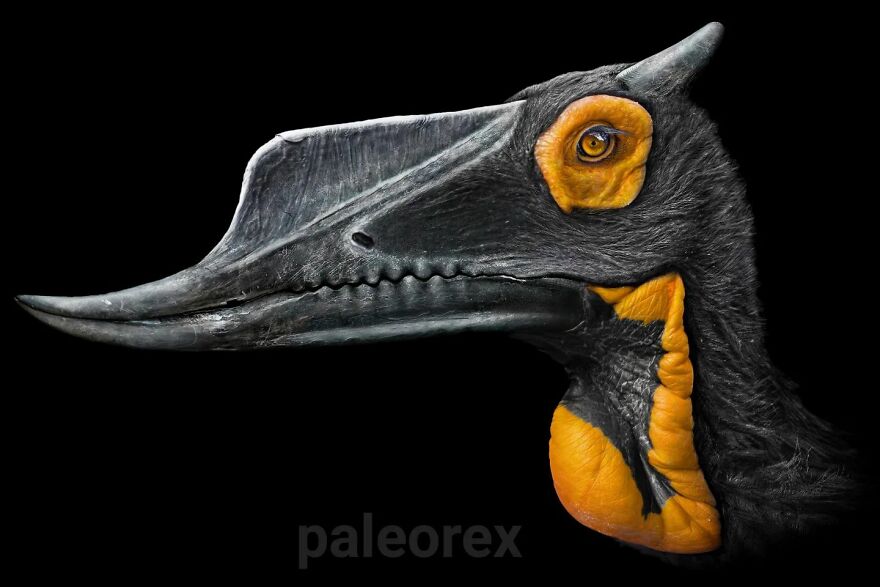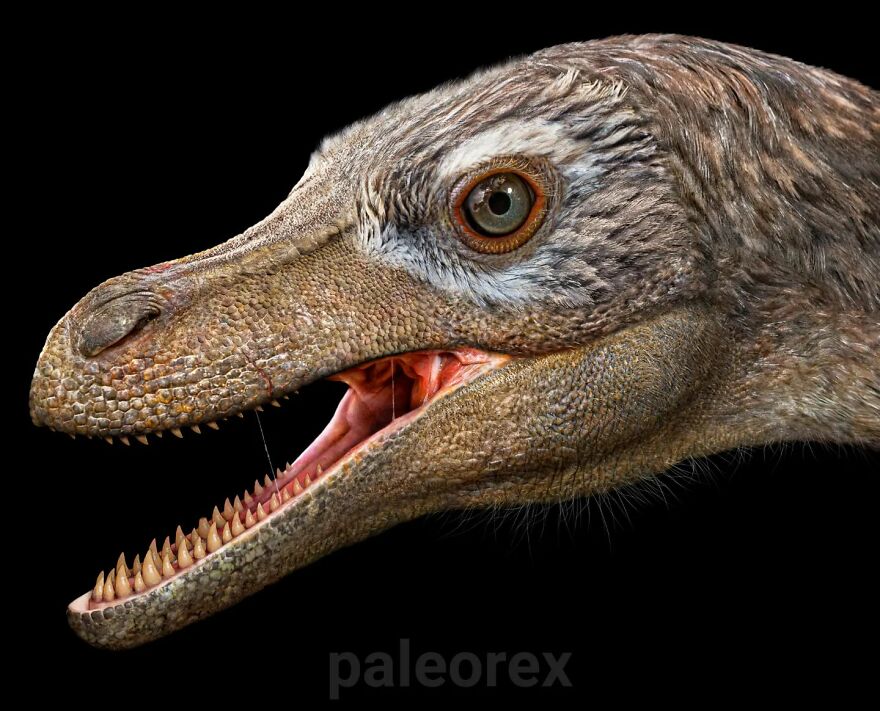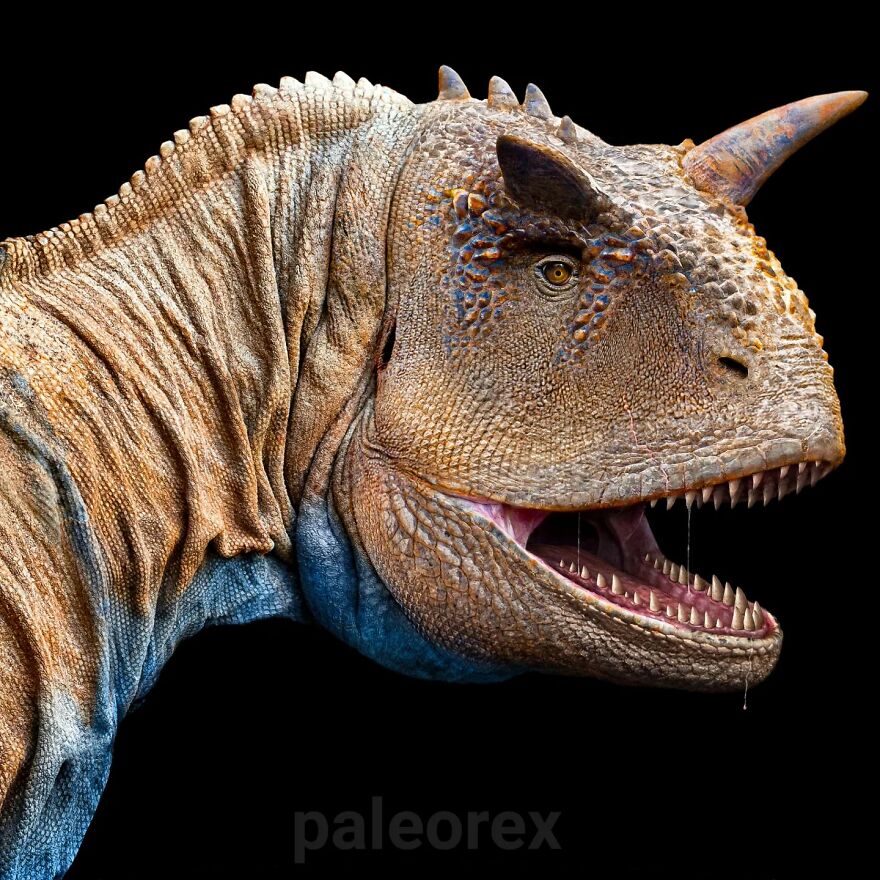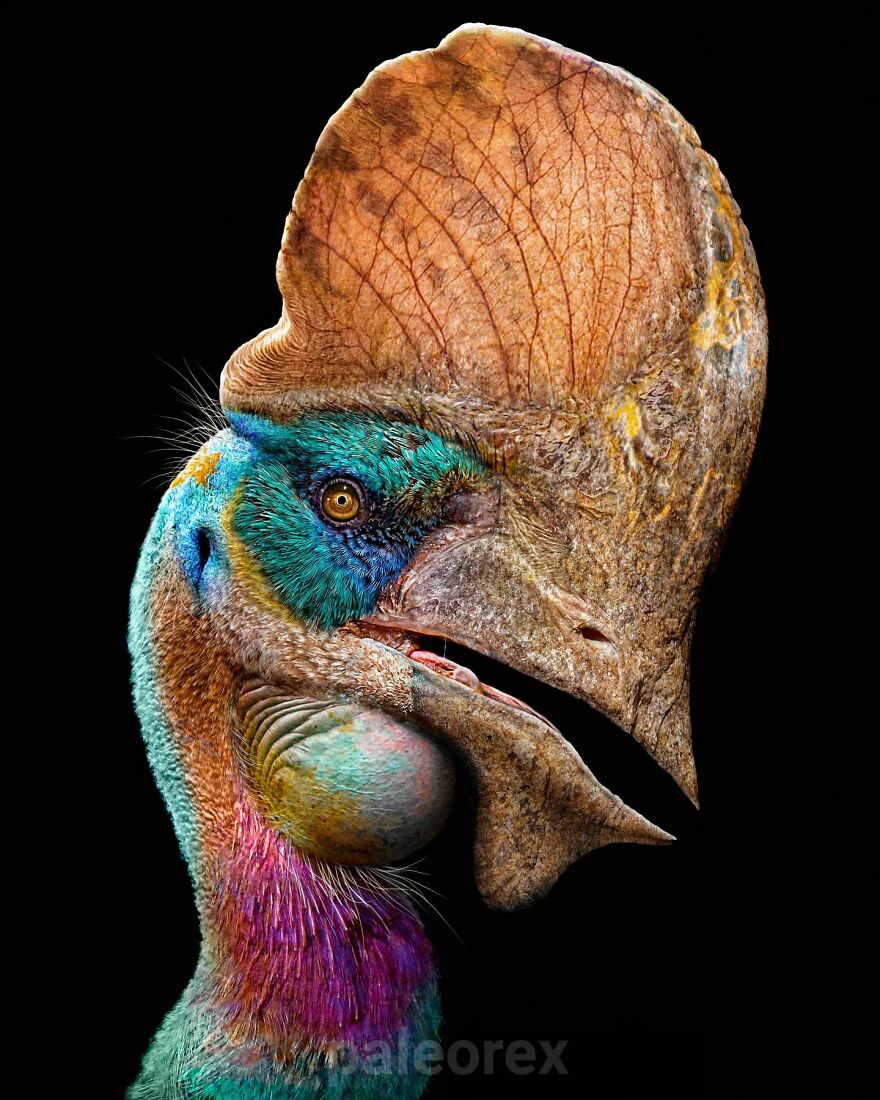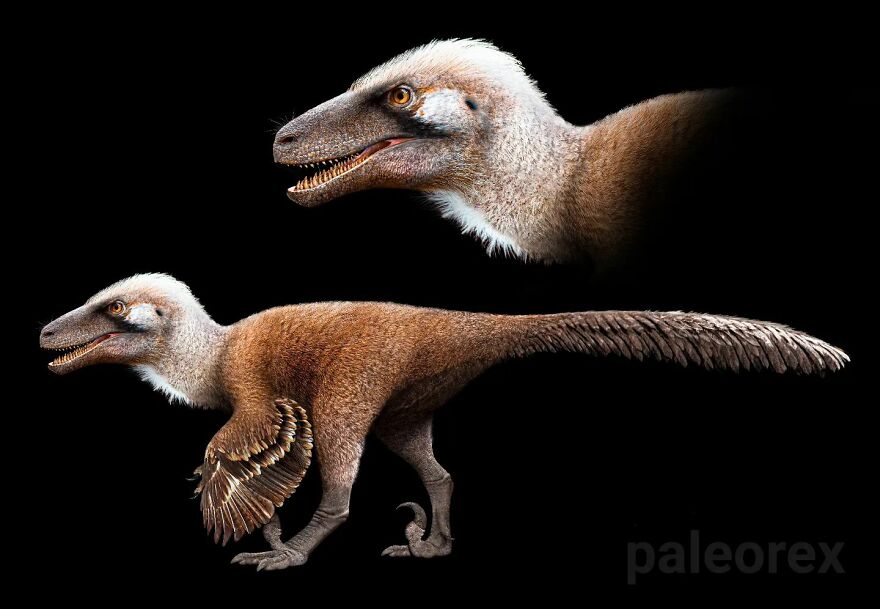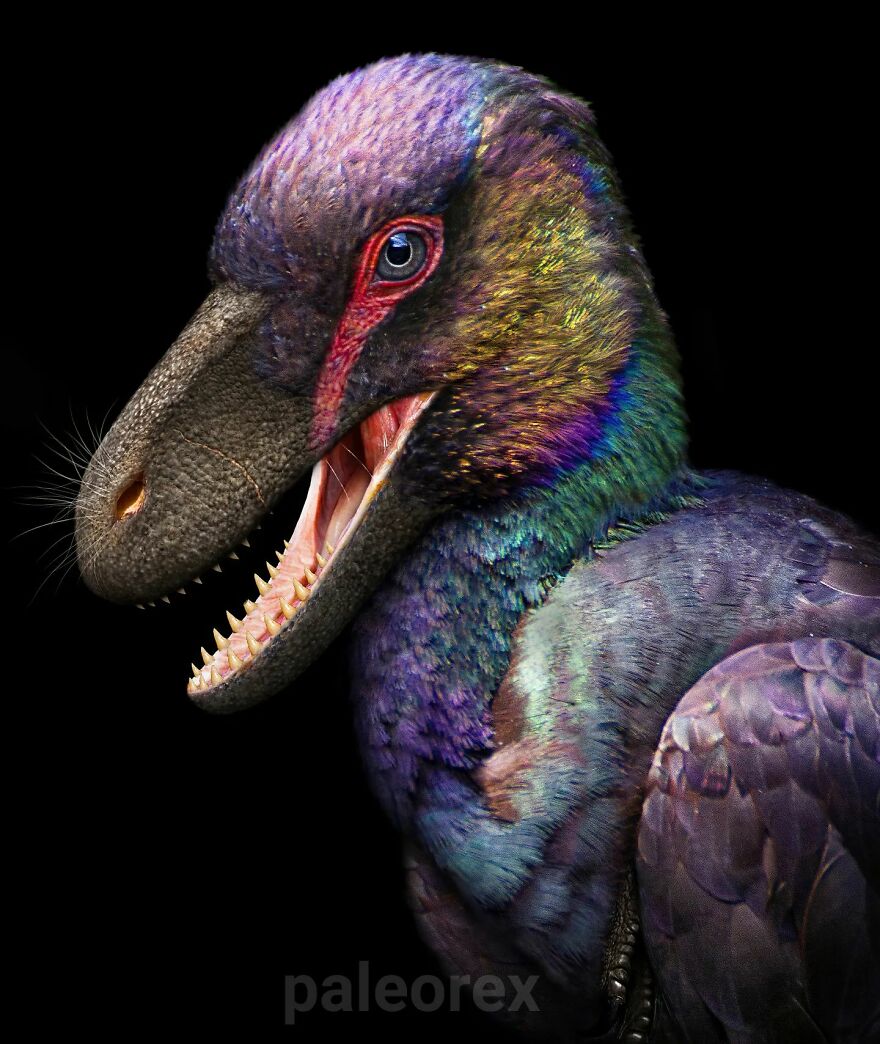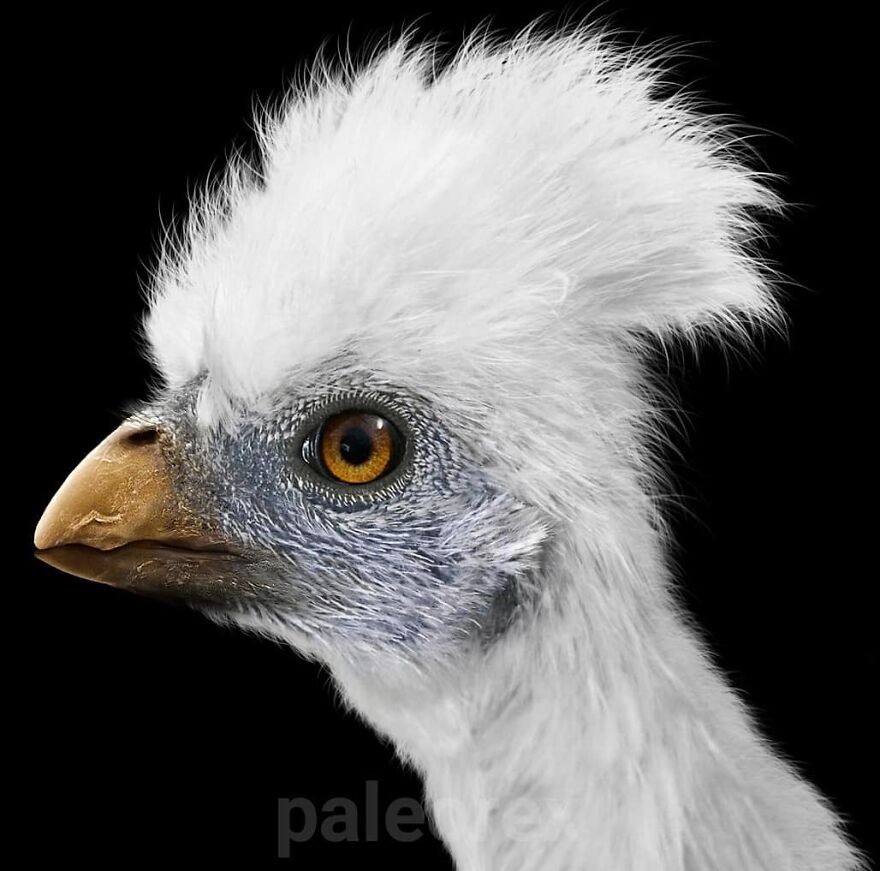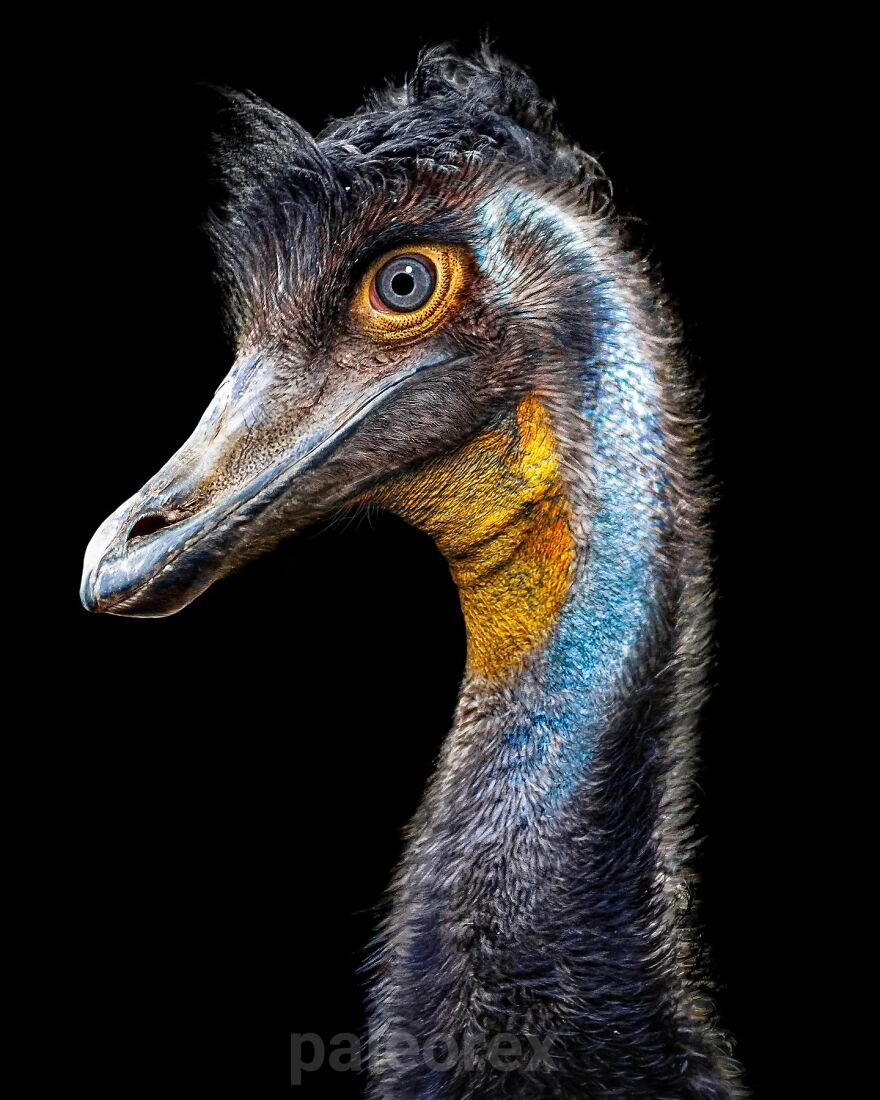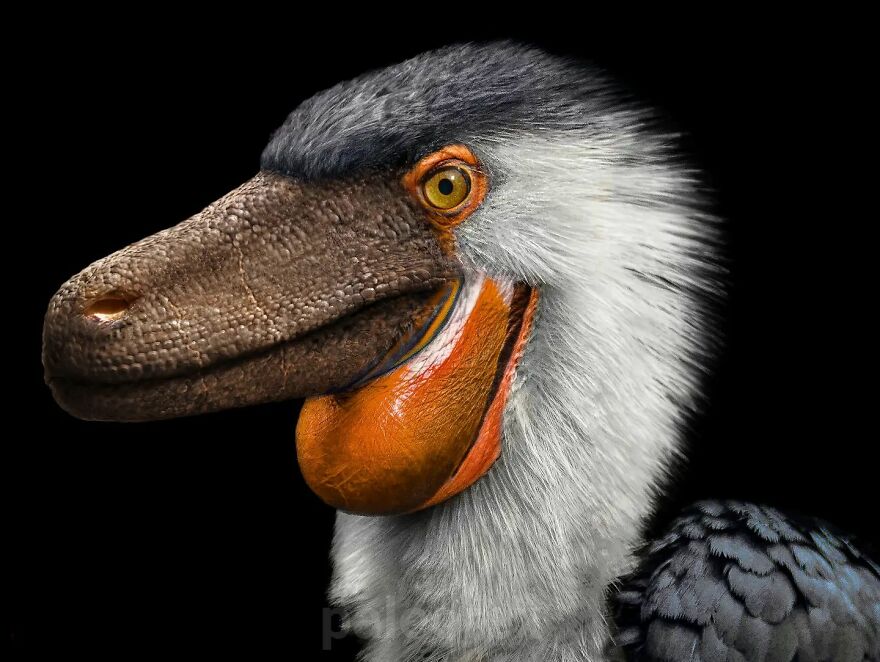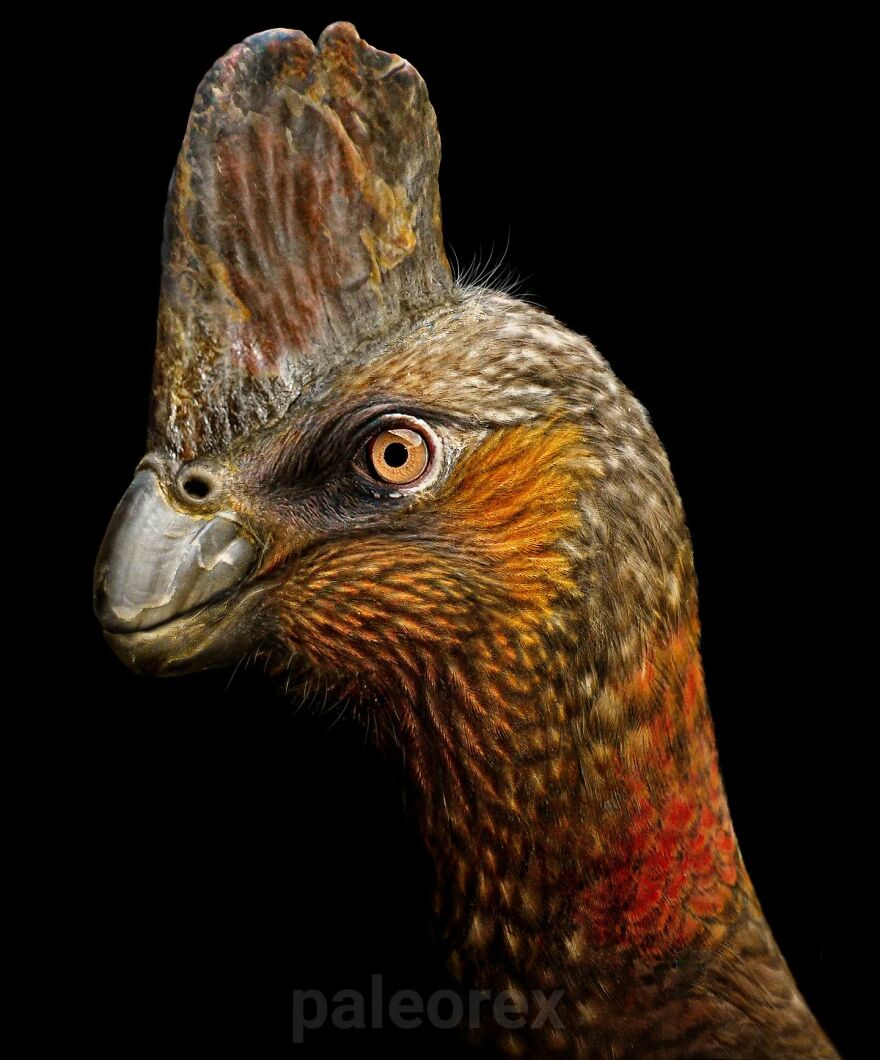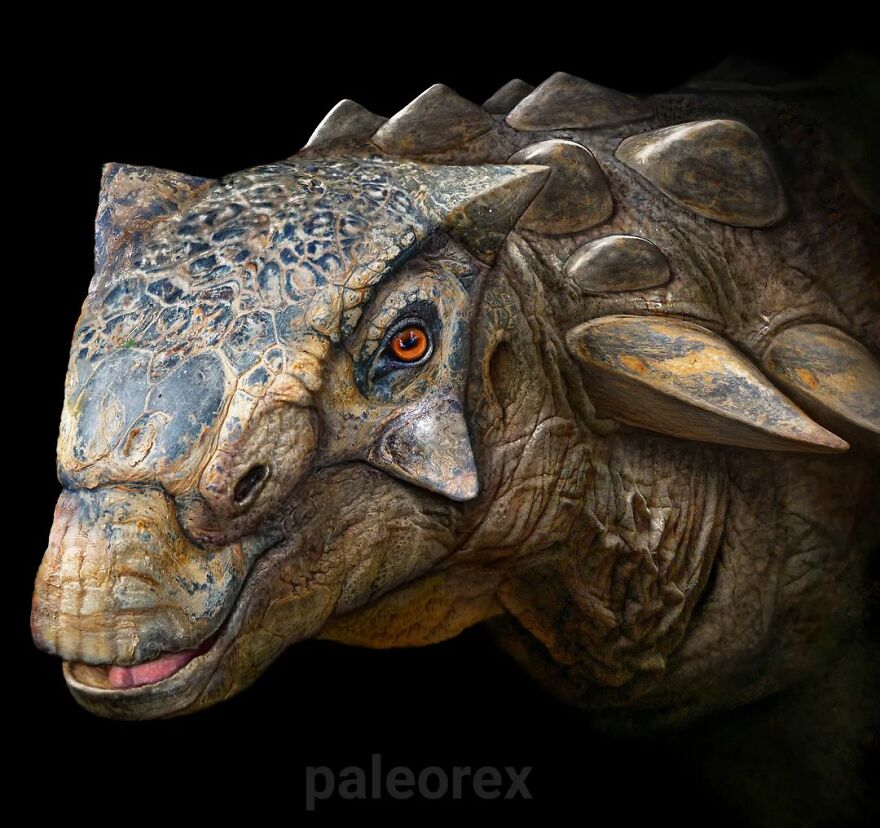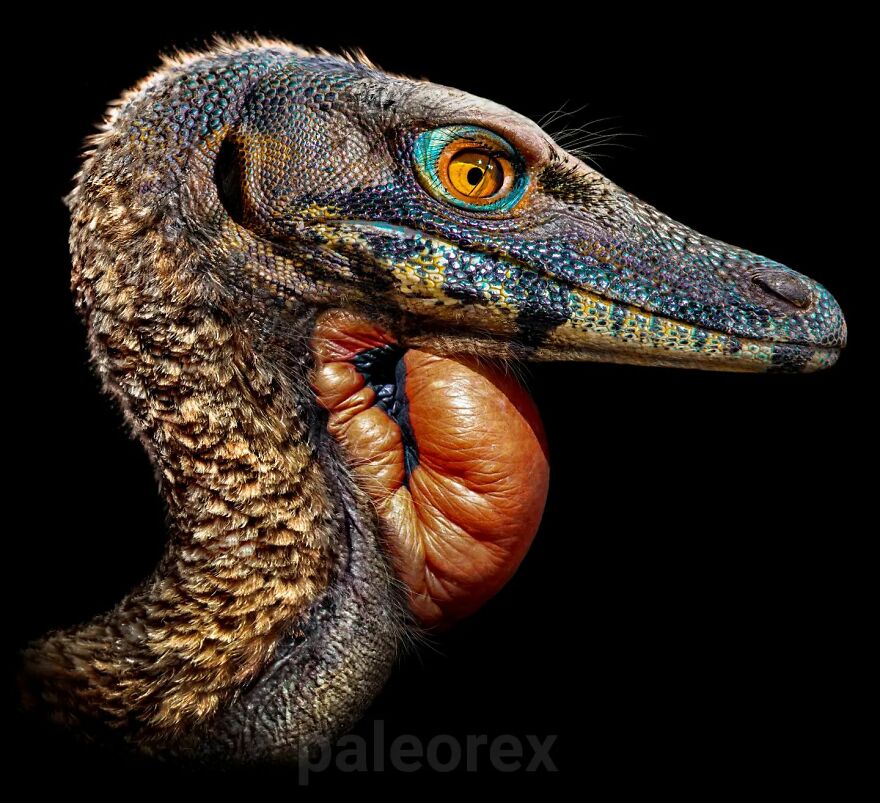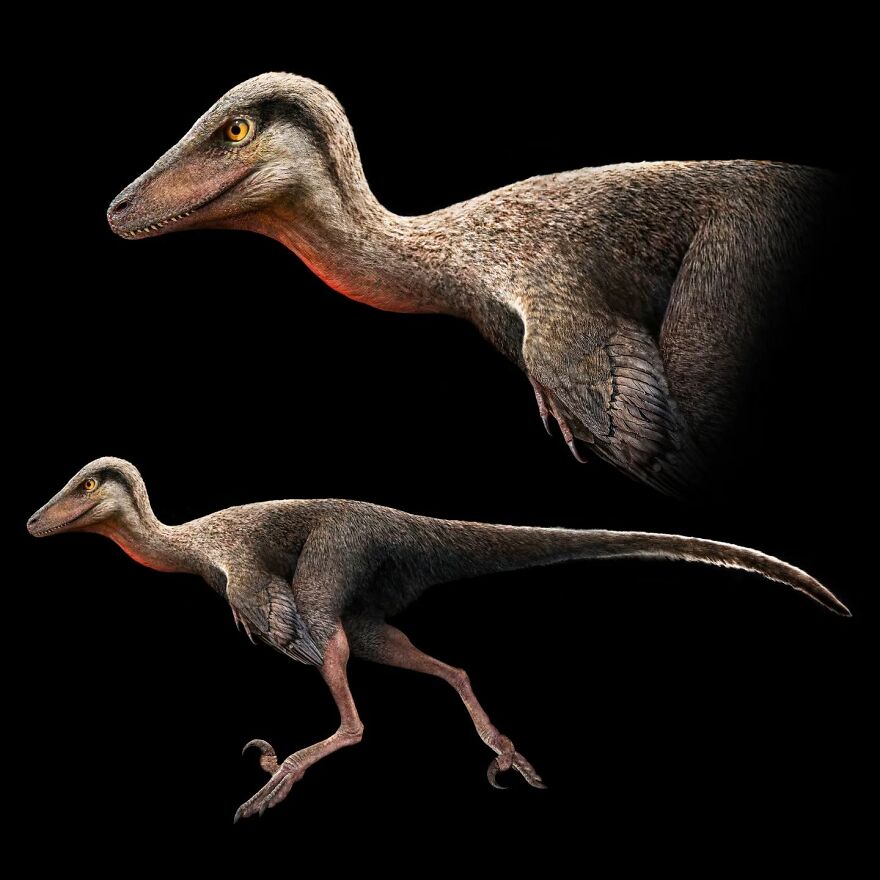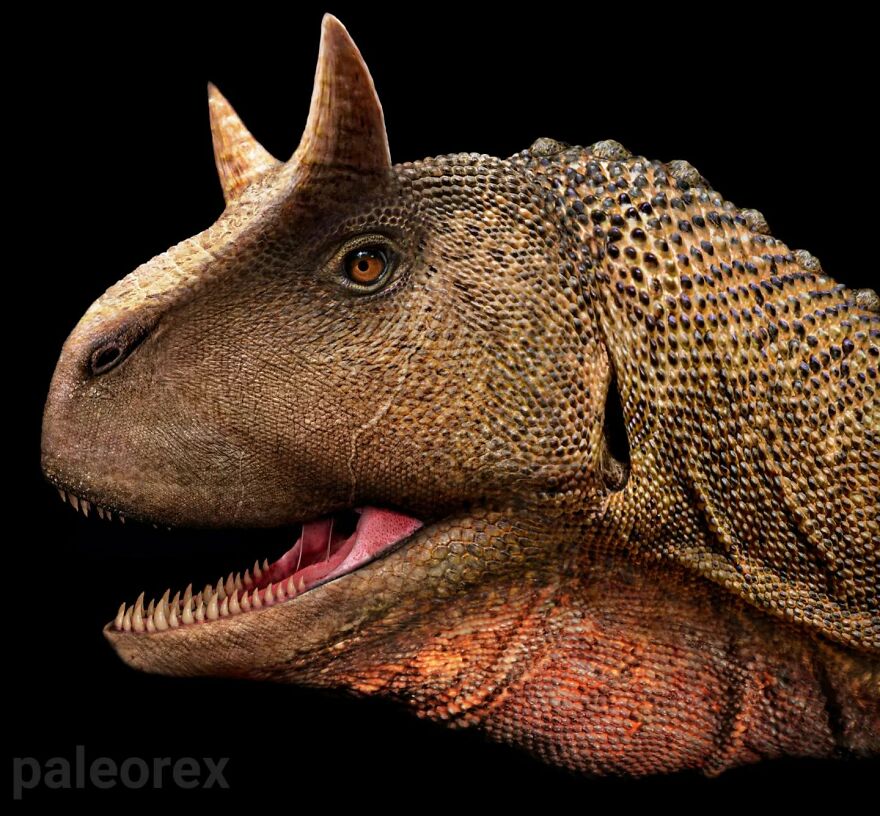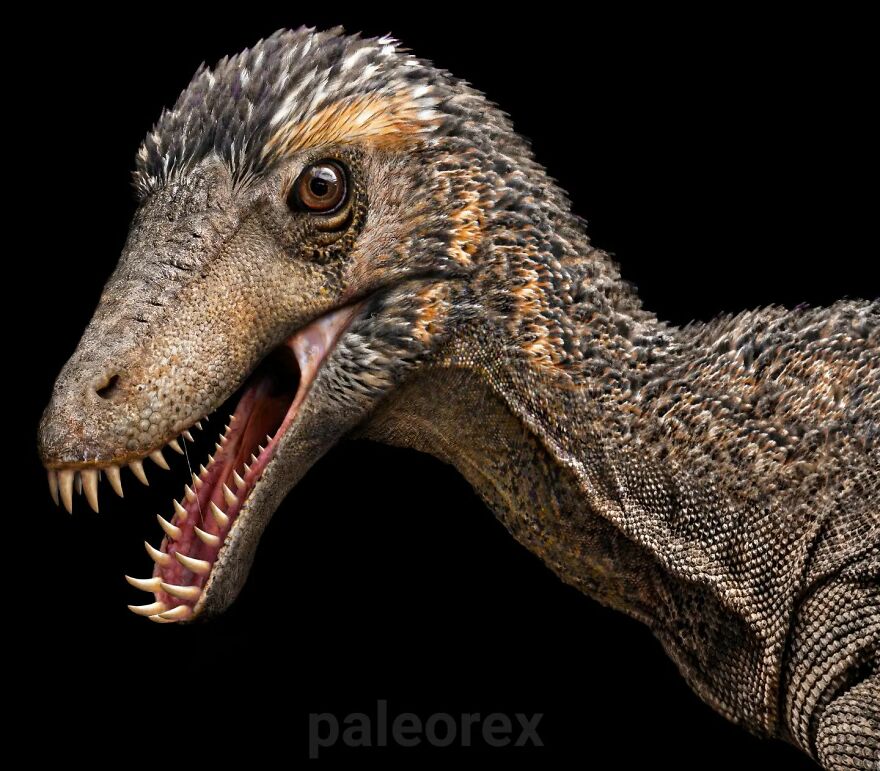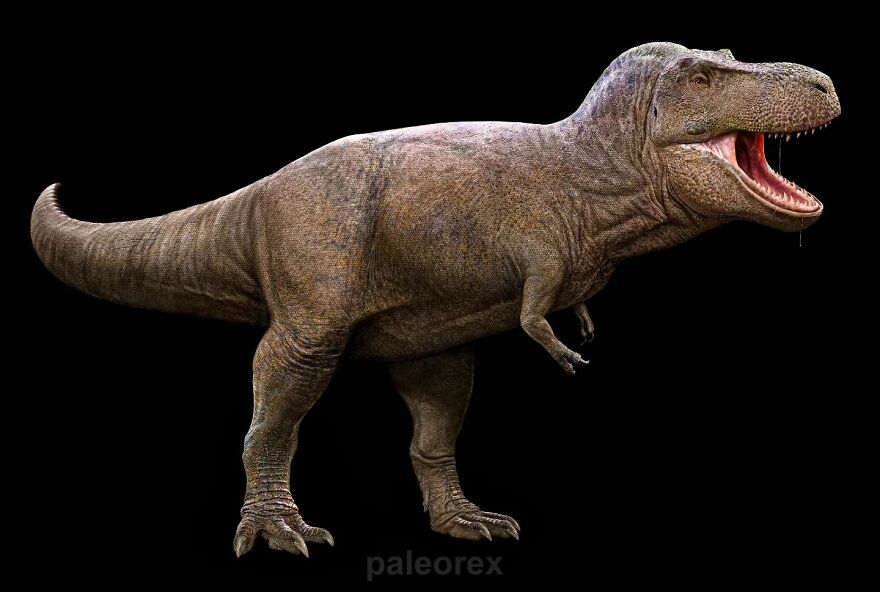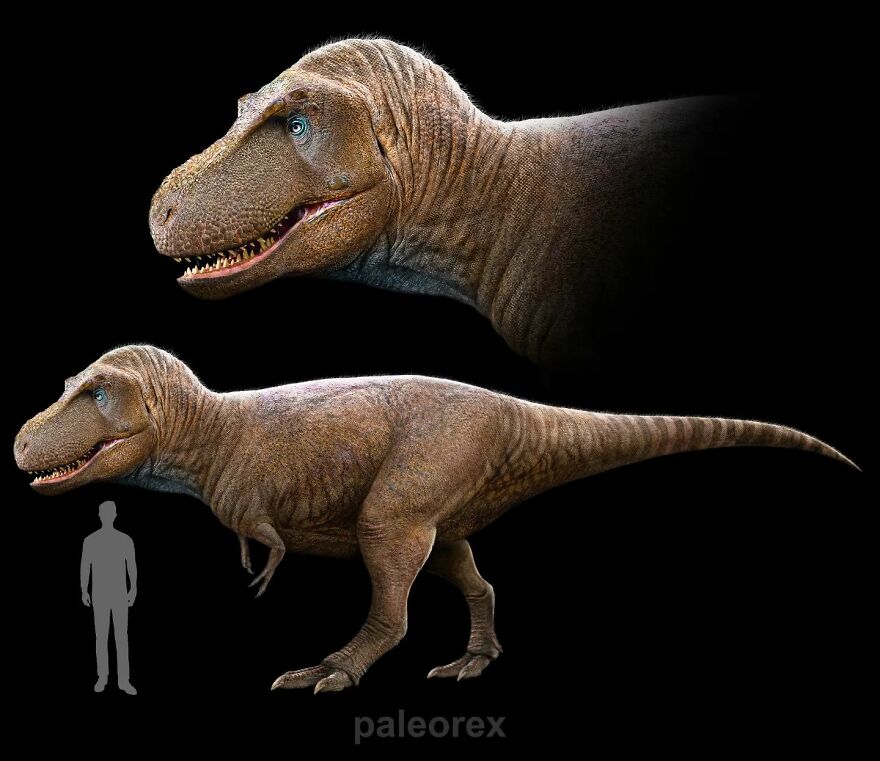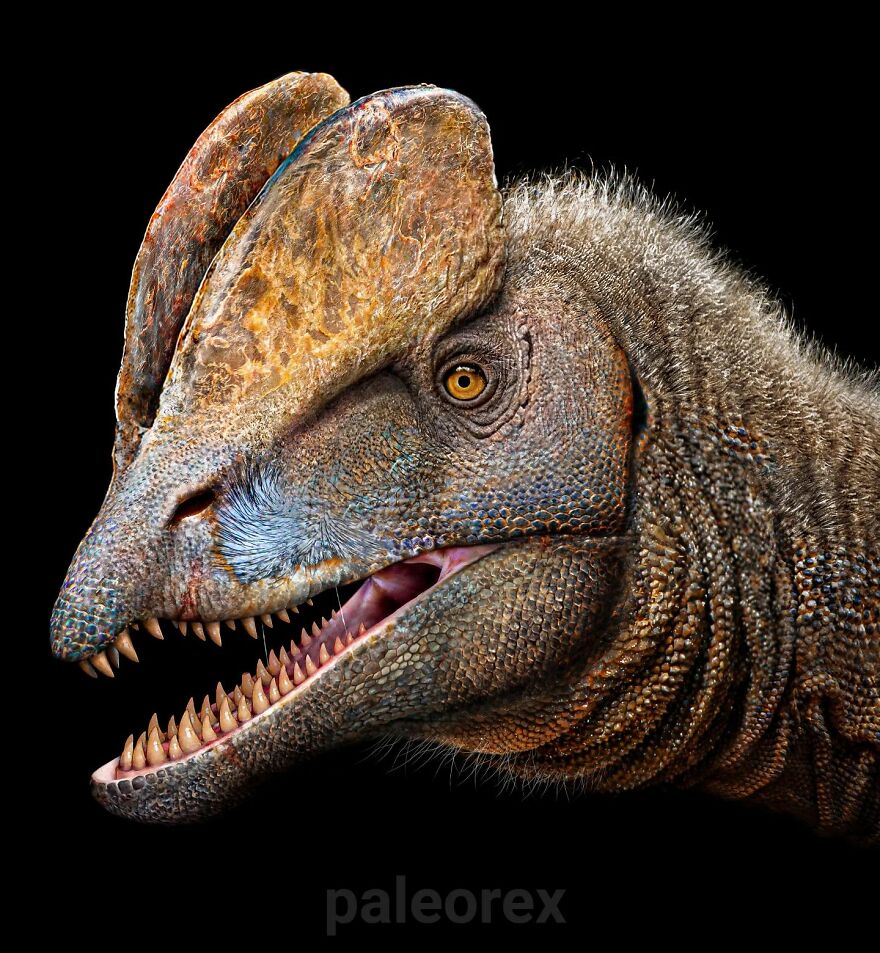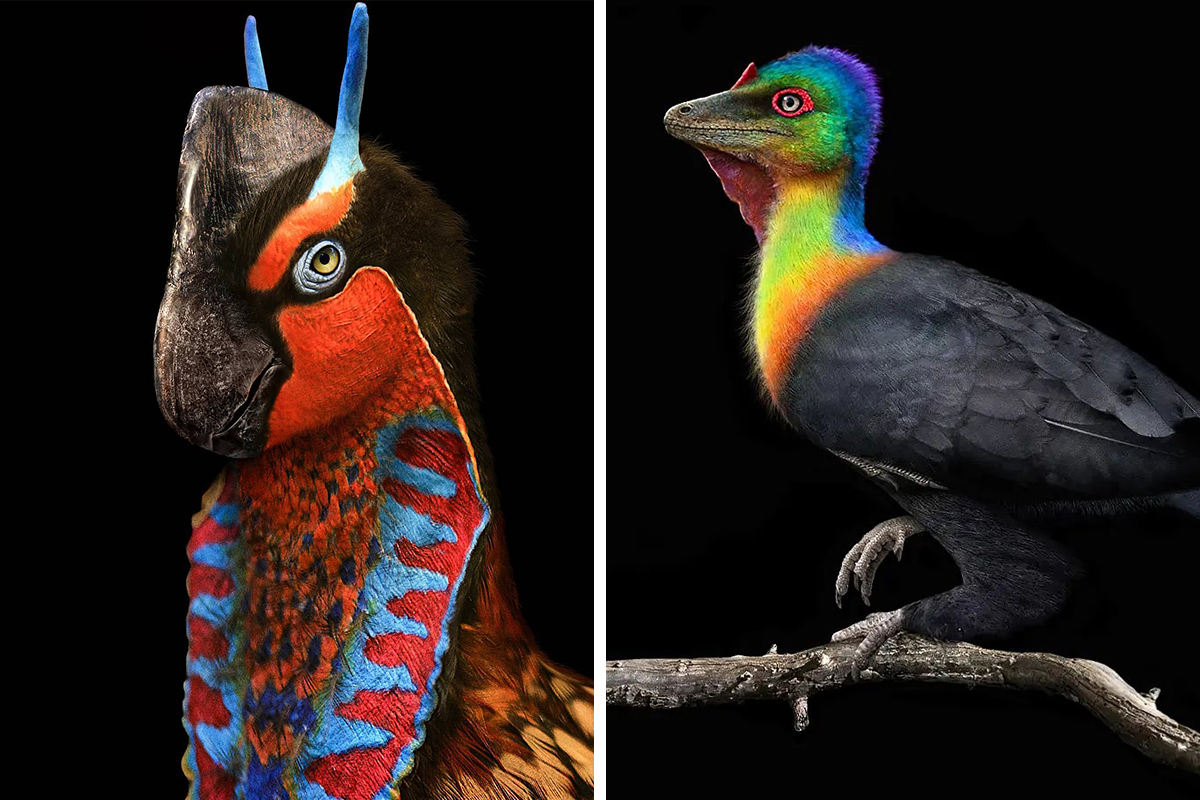
24Kviews
This Artist Shows What Long-Extinct Animals Might’ve Looked Like In His 21 Illustrations
People have always been wondering what animals were roaming the earth long before humans did. Some have evolved into the animals we know today, while others have been extinct for millions of years.
Graphic artist and illustrator known as Paleorex tries to bring prehistoric animals back to life through his vivid 3D renders. The artist specializes in what he calls “paleoart”, or the art of representing prehistoric creatures.
So, Pandas, are you ready to travel back in time? And don't forget to visit part 1 at Bored Panda as well.
This post may include affiliate links.
Oviraptor
Oviraptor was a small, lightly built predatory or omnivorous dinosaur that brooded its eggs in a manner similar to birds. It lived in the Late Cretaceous Period, about 100 million to 65 million years ago, in eastern Asia. It was about 1.8 metres long and walked on two long, well-developed hind limbs. The forelimbs were long and slender, with three long clawed fingers clearly suited for grasping and tearing. The skull had a large and peculiar cranial crest and the jaws lacked teeth, but were probably sheathed with a horny, beak-like covering, effective for feeding on hard objects, such as seeds or cracking eggs.
So what is paleoart? According to Brian Engh, a California-based paleoillustrator, paleoart is a “difficult and challenging art form, requiring a good understanding of anatomy, biology, the ability to render a huge variety of textures and environmental details realistically, as well as depict behavior and ecology in a believable way.”
Caihong
The name Caihong, meaning "rainbow" in Mandarin, refers to the stunningly preserved remains found in China, which suggest that this duck-sized dinosaur had iridescent feathers on its head and chest, similar to those on modern hummingbirds.
The flashy display may have provided a social or sexual cue, like modern peacock tails. The dinosaur also had a small bony crest on its head and a bird-like body, including the types of feathers required for flight.
Caihong lived in forests and it may have used its wings to glide from tree to tree, preying on lizards and small mammals.
Caihong was truly unique and feathered dinosaurs alike offer a fascinating array of insights into paravian evolution.
Synthetoceras
Synthetoceras is a relatively large, extinct protoceratid, endemic to North America during the Late Miocene and existing for approximately 5 million years. It is mostly known thanks to its peculiar head ornamentation, which is seemingly only present on males, and was almost certainly a display feature for attracting mates and species recognition.
Paleoart is a diverse and rapidly growing field that includes the production of scientifically accurate reconstructions of prehistoric life, speculative reconstructions based on current scientific knowledge, and fantasy art. The primary goal of the field is to depict extinct animals in a manner that gives an accurate impression of how they lived in their natural environments.
Usually, when we think of dinosaur drawings or other art forms, they are nowhere as vivid as this artist’s.
Dsungaripterus
Dsungaripterus is a genus of pterosaur, with an average wingspan of 3 meters. It lived during the Early Cretaceous, in China. The remarkable feature of this large pterosaur is the head. A thin crest sticks up along the mid-line of the skull, and another just behind. The jaws are pointed and turned upwards at the tips, like specialist forceps. Instead of teeth, it has bony knobs. The strange mouth has been interpreted as an adaptation to feeding on shellfish, with the narrow beak used for prizing the shells from their substrate and the bony knobs used for crushing them.
Where can I get one!! Lol I guess I would have to go back 100 million years but 100 percent worth it
Velociraptor
Velociraptor is one of the most iconic dinosaurs of all. It was a ferocious hunter that likely relied on its deadly sickle claws to pierce the vital areas of its victim's body, much like today's eagles. Velociraptors have been misunderstood ever since they were featured in Jurassic Park as giant scaly dinosaurs. In reality, Velociraptors shared many traits found in modern-day birds, most notably, feathers.
Through art, this long-extinct and fascinating animal is brought back to life!
They were much smaller than the JP counterparts, but still pretty deadly.
However, paleoart is not limited to dinosaurs but includes all prehistoric vertebrates, invertebrates, and plants, including mammals.
The term "paleoart" was first used by the artist and author Robert McCall in a 1978 magazine article about his work called “Time Machines” which depicted various extinct animals living in modern environments around the world.
Carnotaurus V2
Carnotaurus was one of the most bizarre meat-eating dinosaurs of the Cretaceous. Its skull was short, with a pair of knobby horns over its small eyes. The neck and shoulder blades were well developed, but the arms were incredibly short, with forearms so shrunken that they were practically just wrists (not even Tyrannosaurus rex had such small arms). With its relatively small skull, Carnotaurus might have not been able to attack big plant-eating dinosaurs, but it was probably a fast hunter, thanks to its long and powerfully built legs. Thus, it could have easily chased down smaller, agile prey.
Carnotaurus had a similar feeding strategy to Allosaurus. Take chunks out of large Sauropods,and get away before they retaliate. So it definitely would have been able to attack Large Plant-eating Dinosaurs.
Tapejara
Tapejara is a genus of Brazilian pterosaur from the Cretaceous Period. Tapejara's crest consisted of a semicircular crest over the snout, and a bony prong that extended back behind the head. It was a relatively small pterosaur, with a wingspan of approximately 1.3 metres.
It is said that paleoart is important for communicating discoveries and data found among paleontologists as well as in shaping the viewer's perception of the prehistoric world. Without studying dinosaurs and other creatures, we would have not developed evolutionary theory and other scientific concepts, such as plate tectonics and biogeography.
Utahraptor
Utahraptor, meaning Utah's predator, was one of the largest dromaeosaurid theropod dinosaurs or raptors to ever exist. It lived in North America during the Early Cretaceous period. Unlike most dromaeosaurids, it was much more heavy-built, comparable to a polar bear in weight, and estimated to have reached up to 7 meters in length. Like most of its kind, it possessed a large sickle claw, perfectly adapted to dispatch its prey. Although feathers have never been found in association with Utahraptor specimens, there is strong phylogenetic evidence suggesting that all dromaeosaurids possessed them.
I read on Wikipedia feathers have never been found, but closely related species had feathers. Here reconstructed with wings. What use of the small wings though? Especially on such a large and heavy animal.
Dromaeosaurus
Dromaeosaurus is a genus of dromaeosaurid theropod dinosaur which lived during the Late Cretaceous period, between 80 and 69 million years ago, in Alberta, Canada, and the western United States. Its name means "swift running lizard" and it measured about 2 meters long and weighed 45 kilograms, making it very similar to its close relative Velociraptor, which happened to be living at the same time, however, on the other side of the world.
Leaellynasaura
Leaellynasaura was a small, yet strong and remarkable ornithopod of the mid-Cretaceous. It could survive and even thrive in cold and harsh environments. It once lived in Australia, in a time when Victoria was within the Antarctic Circle. Although this latitude is very cold today, it was significantly warmer during the Cretaceous. Due to the Earth's tilt, Leaellynasaura and its contemporaries would have endured long winters and months of darkness. Depending on the latitude, it is possible that the sun might not have risen for several weeks or months in the winter. To cope with this, Leaellynasaura evolved enlarged eyes, implying an adaptation to low-light conditions. The tail of Leaellynasaura is anomalous; it is one of the longest known among dinosaurs, relative to overall body length. It was flexible and three times as long as the rest of the body combined. Perhaps, by wrapping its long, fluffy tail around its body, Leaellynasaura could have better regulated its body temperature and survived the cold winter months.
This is cutest dino 🥹 theres adorable art of them as lil chonky furballs
Ornithomimus
Ornithomimus (meaning "bird mimic") was a genus of ornithomimid dinosaurs from the Late Cretaceous period of what is now North America. Ornithomimus was a swift bipedal theropod, which fossil evidence indicates that it had feathers, a toothless beak, and a long neck, which provided a superficial resemblance to the living ostrich
Saurornitholestes
Saurornitholestes was a dromaeosaurid native to North America in what is now Alberta, Canada, and New Mexico. Like other theropods in the family Dromaeosauridae, Saurornitholestes had a long, curved, blade-like claw on the second toe of each foot. It was about 1.8 m long and weighed approximately 10-15 kg, similar to the well-known Velociraptor, however, it was also slightly more lightly built and long-legged compared to its relatives.
Corythoraptor
Corythoraptor was a genus of oviraptorid dinosaur from the late Maastrichtian Nanxiong Formation of South China. It was a relatively large member of the Oviraptoridae family, reaching up to 1.6 meters in length, and was likely an omnivore. Its most striking feature was its large ornamental crest, which was located on the top of its skull and resembled that of a modern cassowary.
I love that the beak looks used (don't know a proper word for it). Such attention to detail.
Mymoorapelta
Mymoorapelta was a very primitive ankylosaur. It was one of the few that lived during the Jurassic period. It is usually classified as being in Polacanthidae, but there is some debate, since it is so primitive, whether or not it deserves its own family. It was named after Mygatt-Moore, the quarry in which its fossil remains were found. It was about 3 meters long and the thick armor on its body was intended to provide protection from large Jurassic age predators such Allosaurus.
Compsognathus
Compsognathus is a genus of small, bipedal, carnivorous theropod dinosaur. Members of its single species Compsognathus longipes could grow to around the size of a turkey. They lived about 150 million years ago, during the Tithonian age of the late Jurassic period, in what is now Europe.
Daurlong
This newly discovered dinosaur lived in what is now Mongolia, during the Early Cretaceous epoch, between 130 and 120 million years ago. It was a type of mid- sized dromaeosaurid, a group of bird-like predatory dinosaurs, known for their deadly sickle claws, which fed on fish, mammals and other small dinosaurs.
Carnotaurus
Carnotaurus was one of the most bizarre meat-eating dinosaurs of the Cretaceous. Its skull was short, with a pair of knobby horns over its small eyes. The neck and shoulder blades were well developed, but the arms were incredibly short, with forearms so shrunken that they were practically just wrists (not even Tyrannosaurus rex had such small arms). With its relatively small skull, Carnotaurus might have not been able to attack big plant-eating dinosaurs, but it was probably a fast hunter, thanks to its long and powerfully built legs. Thus, it could have easily chased down smaller, agile prey.
Masiakasaurus
Masiakasaurus was a relatively small predatory noasaurid theropod dinosaur from the Late Cretaceous of Madagascar. In Malagasy, masiaka means "vicious"; thus, the genus name means "vicious lizard". Unlike most theropods, the front teeth of Masiakasaurus are projected forward. This unique and bizarre dentition suggests that it had a specialized diet, perhaps including fish and other small prey.
Tyrannosaurus Rex
Tyrannosaurus rex, whose name means "king of the tyrant lizards", was one of the largest and deadliest predators to ever roam the Earth.
With a massive body, sharp teeth, and jaws powerful enough to easily crush bones, this famous dinosaur was built to rule, and indeed it dominated North America during the Late Cretaceous, some 65 million years ago.
Daspletosaurus Wilsoni
Daspletosaurus (meaning "frightful lizard") was a tyrannosaurid theropod dinosaur that lived in North America during the Late Cretaceous period. It is one of the closest relatives to the mighty T-Rex, with some experts even suggesting it as its direct ancestor. It had a powerful jaw and short arms, a huge body balanced upon two powerful back legs, and measured about 9 meters in length, making it one of the largest land predators of its time.
Dilophosaurus
At about 7 m in length, and with a weight of about 400 kg, Dilophosaurus was one of the earliest large predatory dinosaurs in North America during the Early Jurassic. It was slender and lightly built, and the skull was proportionally large but delicate. The snout was narrow, and the upper jaw had a noticeable gap below the nostrils. The most striking feature was the pair of large, arched crests on its skull; their complete shape is unknown, but they were probably enlarged by keratin, similar to the crests found in modern cassowaries.
